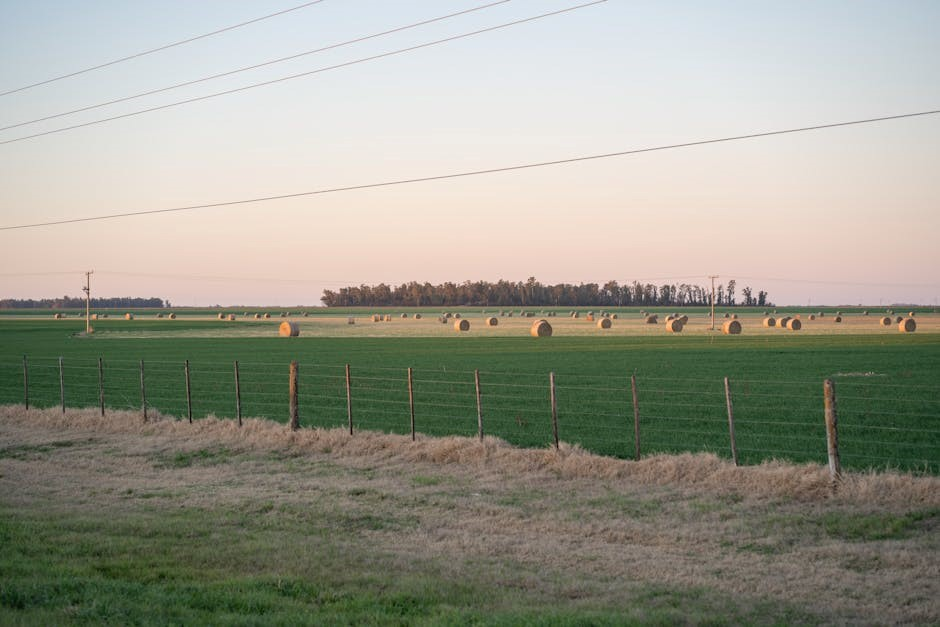Banjo rolls are essential right-hand finger patterns creating dynamic, engaging music. They form the foundation of bluegrass banjo, offering rhythmic drive and melodic expression.
Mastering rolls enhances versatility, allowing players to craft compelling solos and backup lines, making them indispensable for any banjo enthusiast.
1.1 What Are Banjo Rolls?
Banjo rolls are fundamental right-hand finger patterns that create rhythmic and melodic phrases. They are not just sequences of notes but specific picking patterns.
Essential rolls include Forward, Backward, and Alternating patterns, each with distinct finger placements and timings. These rolls form the core of bluegrass banjo playing, enabling dynamic and expressive music.
1.2 Importance of Banjo Rolls in Bluegrass Music
Banjo rolls are the rhythmic foundation of bluegrass music, providing drive and energy. They enable players to deliver both melody and harmony seamlessly, creating engaging and dynamic performances.
Mastering rolls is crucial for authenticity and emotional impact in bluegrass. They allow for intricate solos, tight backup playing, and a rich, full sound that defines the genre. Rolls are versatile, fitting various musical contexts while maintaining the genre’s distinctive flavor.

Basic Banjo Rolls
Basic banjo rolls are foundational finger patterns that create rhythmic drive in bluegrass music. They include forward, backward, and alternating rolls, essential for building technique and style.
Mastering these patterns enhances timing and coordination, providing a solid base for more complex rolls and solos in banjo playing.
2.1 Forward Roll

The forward roll is a fundamental right-hand pattern in banjo playing, often used in bluegrass music. It involves a consistent, alternating sequence of the thumb, index, and middle fingers. This roll creates a driving rhythm and is essential for building speed and precision. Practicing the forward roll daily helps develop finger independence and strengthens the foundation for more complex rolls. It is commonly used in solos and backup playing to add energy and texture to the music. Regular practice of forward rolls enhances overall banjo technique and musicality.
2.2 Backward Roll
The backward roll is the reverse of the forward roll, starting with the thumb and followed by the index and middle fingers. It creates a smooth, flowing rhythm and is widely used in bluegrass banjo to add variety and texture. This roll is particularly effective in solos and backup playing, providing a dynamic contrast to forward rolls. Regular practice of the backward roll enhances finger coordination and overall right-hand technique, making it a vital component of every banjo player’s skill set.
2.3 Alternating Roll
The alternating roll combines forward and backward rolls in a seamless pattern, creating a versatile and rhythmic flow. It alternates between the thumb and index finger, adding complexity and variety to banjo playing. This roll is essential for creating intricate melodies and is often used in bluegrass to add depth to solos and backup lines. Regular practice of the alternating roll improves finger dexterity and overall right-hand synchronization, making it a foundational technique for advanced players.

Advanced Banjo Rolls
Advanced banjo rolls include complex patterns like Forward-Backward, Forward-Reverse, and Pegleg Sailor, enhancing drive and intricacy in bluegrass music. They expand a player’s rhythmic expression.
3.1 Forward-Backward Roll
The Forward-Backward Roll combines forward and backward rolls, creating a seamless flow of notes. It adds complexity and depth to banjo playing, enhancing rhythmic versatility. This roll is particularly effective in bluegrass music, providing a dynamic transition between patterns. By alternating between forward and backward strokes, players can achieve a smooth, intricate sound that elevates their overall performance. Regular practice is essential to master this advanced technique and integrate it into various musical contexts.
3.2 Forward-Reverse Roll
The Forward-Reverse Roll is an advanced pattern combining forward and reverse strokes in a single sequence. It creates a rich, intricate sound, adding depth to banjo music. This roll is ideal for bluegrass and melodic styles, offering rhythmic complexity. Players alternate between forward rolls and reverse rolls, ensuring smooth transitions. Regular practice helps develop the finger dexterity needed for this technique, making it a valuable addition to any banjo player’s skill set for enhancing musical expression and versatility.
3.3 Pegleg Sailor Roll
The Pegleg Sailor Roll is an advanced banjo roll known for its rhythmic complexity and unique sound. It involves an alternating pattern of forward and reverse strokes, creating a driving, intricate rhythm. This roll is particularly effective in bluegrass and melodic banjo styles, adding depth and interest to solos and backup playing. Regular practice is essential to master its timing and smooth execution, making it a standout technique for skilled banjo players seeking to expand their musical expression and versatility.
Techniques to Enhance Banjo Rolls
Essential techniques include pull-off, hammer-on, and forward-backward rolls, which add complexity and fluidity to your playing, enhancing both speed and melodic expression in banjo music.
4.1 Pull-Off and Hammer-On Techniques
Pull-off and hammer-on techniques are fundamental for enhancing banjo rolls. Pull-offs involve plucking a string and releasing to a lower note, while hammer-ons transition from a lower to a higher note. These techniques add smoothness and complexity to rolls, allowing for quicker note changes and a more dynamic sound. Regular practice of these methods is crucial for mastering advanced roll patterns and improving overall finger dexterity on the banjo.
4.2 Thumb In and Out Rolls
Thumb in and out rolls are intricate patterns combining thumb and finger techniques. The thumb plays a central role, alternating between in and out positions to create smooth transitions. These rolls add rhythmic depth and variety to banjo playing. Regular practice helps integrate the thumb seamlessly into roll patterns, enhancing overall musicality and versatility in bluegrass and other styles. Mastery of these techniques is essential for advanced banjo roll execution and expressive performance.

Banjo Roll Exercises
Exercises like Alternating Roll Study 1 and Em Chordal Study with Forward/Reverse Rolls help improve technique. Regular practice enhances finger precision and rhythmic accuracy in banjo playing.
5.1 Alternating Roll Study 1
The Alternating Roll Study 1 focuses on developing thumb, index, and middle finger dexterity. It involves a repeating pattern of forward and reverse rolls, emphasizing timing accuracy. Starting slowly, players alternate between strings, ensuring smooth transitions. This exercise strengthens finger independence and rhythm, essential for advanced techniques. By mastering this study, banjoists build a solid foundation for more complex rolls and improve overall picking precision.
5.2 Em Chordal Study with Forward/Reverse Rolls
The Em Chordal Study combines forward and reverse rolls within an Em chord structure, focusing on smooth string transitions and rhythmic timing. Players alternate between strings, emphasizing clean picking and note clarity. This exercise improves finger coordination and builds confidence in executing complex roll patterns. By practicing in a chordal context, banjoists develop a stronger connection between rolls and harmonic structure, enhancing their overall musicality and versatility.

Banjo Rolls in Different Time Signatures
Banjo rolls in 4/4 emphasize strong downbeats, while 3/4 or 6/8 time creates a waltz-like feel, adapting rolls to fit rhythmic structures.
6.1 Banjo Rolls in 4/4 Time
Banjo rolls in 4/4 time are foundational for bluegrass music, emphasizing strong downbeats and a steady rhythm.
Forward, backward, and alternating rolls are commonly used, providing a driving feel and rhythmic consistency.
Players often combine these rolls with melody notes to enhance musicality and maintain forward motion in 4/4 time signatures, ensuring engaging performances.
6.2 Banjo Rolls in 3/4 or 6/8 Time
Banjo rolls in 3/4 or 6/8 time add a lilting, triple-meter feel to music. Forward rolls and variations are commonly used, adapting to the rhythmic structure of these time signatures.
Players often emphasize the downbeat and middle beats to maintain a smooth, waltz-like rhythm. Letting notes ring enhances the melodic flow, making these rolls ideal for ballads and traditional tunes.
Chordal Studies with Banjo Rolls
Chordal studies combine banjo rolls with chord shapes, enhancing musicality. Key of G and D/Em studies are common, using forward and reverse rolls to create smooth transitions and timing precision.
7.1 Key of G Chordal Study
The Key of G Chordal Study integrates banjo rolls with G chord shapes, emphasizing smooth transitions and timing. Using forward and reverse rolls, players create fluid, melodic lines over G chords.
7.2 D and Em Chordal Study
The D and Em Chordal Study combines banjo rolls with D and Em chord shapes, focusing on smooth transitions and rhythmic accuracy. Using forward and reverse rolls, players develop a strong foundation in timing and melodic flow.
This study emphasizes the integration of rolls with chordal structures, helping to create dynamic and expressive phrases. Practicing these exercises regularly enhances finger dexterity and overall musicianship.

Advanced Roll Patterns
Advanced roll patterns combine intricate fingerpicking techniques with complex rhythms, adding depth and texture to banjo playing. These patterns expand musical expression and technical prowess.
8.1 Single-String Roll Patterns
Single-string roll patterns focus on intricate fingerpicking on one string, emphasizing precision and speed. These patterns often incorporate advanced techniques like pull-offs and hammer-ons, creating smooth transitions. By isolating strings, players develop clean articulation and rhythmic accuracy, enhancing overall performance. Regular practice of these patterns strengthens finger independence and dexterity, making complex rolls more accessible. They are ideal for refining melodic and harmonic expressions in bluegrass banjo.
8.2 Two-Finger Roll Patterns
Two-finger roll patterns involve alternating between index and middle fingers, creating a rhythmic flow. These patterns are fundamental for bluegrass banjo, offering versatility and drive. They often combine forward and backward rolls, adding complexity and texture. Regular practice enhances finger coordination and timing, essential for smooth execution. Two-finger patterns are ideal for building a strong foundation in roll-based playing, making them a cornerstone of banjo technique and a key element in advanced musical expressions.

Practice Tips for Mastering Banjo Rolls
Daily practice, focusing on timing and finger coordination, is crucial. Start with slow tempos and gradually increase speed, ensuring smooth execution of roll patterns and transitions.
9.1 Daily Practice Routine
A consistent daily routine is vital for mastering banjo rolls. Begin with 10-15 minutes of foundational exercises like forward, backward, and alternating rolls. Focus on timing and accuracy, using a metronome to build consistency. Dedicate time to specific roll patterns, such as the forward-backward roll, ensuring smooth transitions between fingers. Gradually increase tempo as proficiency grows. Incorporate chordal studies and songs to apply rolls musically. End with 5-10 minutes of improvisation to reinforce skills creatively.
9.2 Tips for Smooth Roll Execution
Achieving smooth banjo rolls requires relaxed hands and focused finger independence. Use a metronome to ensure consistent timing and evenness. Start slowly, focusing on accuracy, and gradually increase speed. Practice rolls in different time signatures and keys to build versatility. Pay attention to note transitions, ensuring each string rings clearly. Incorporate pull-offs and hammer-ons to enhance fluidity. Regular practice of alternating and forward-backward rolls will refine your technique, making your playing more polished and professional.
Banjo Rolls for Guitar
Banjo rolls can be adapted to guitar, offering similar rhythmic patterns. Techniques like forward and alternating rolls translate well, enhancing guitar playing with dynamic, banjo-inspired textures.
10.1 Adapting Banjo Rolls to Guitar
Adapting banjo rolls to guitar involves translating right-hand finger patterns into guitar picking techniques. This allows guitarists to achieve a similar rhythmic drive and melodic flow as banjo playing.
Techniques like forward and alternating rolls can be applied using a standard pick or fingerstyle methods. This adaptation enhances guitar playing with dynamic, banjo-inspired textures, expanding a guitarist’s stylistic versatility.
10.2 Same Picking Continued
Continuing the same picking patterns from banjo rolls on guitar involves maintaining rhythmic consistency and finger dexterity. Guitarists can replicate banjo rolls using a standard pick or fingerstyle techniques.
This approach allows for seamless transitions between instruments, preserving the dynamic feel of banjo rolls while adapting to guitar’s unique tonal characteristics. Practicing these patterns enhances versatility and bridges the stylistic gap between banjo and guitar playing.
Backup and Improvisation with Banjo Rolls
Banjo rolls add rhythmic texture and drive to backup playing, while also enabling spontaneous, creative improvisation during solos and breaks in bluegrass music.
11.1 Using Rolls in Backup Playing
Using banjo rolls in backup playing provides rhythmic texture and forward motion. Forward and backward rolls are particularly effective, creating a seamless accompaniment to vocals and other instruments.

By integrating rolls into chord changes, players can maintain a driving rhythm while supporting the overall structure of a song, enhancing the band’s cohesive sound and energy.
11.2 Improvising with Banjo Rolls
Improvising with banjo rolls sparks creativity, blending spontaneity with technical skill. By combining forward, backward, and alternating rolls, players can craft melodic lines that flow naturally over chord changes.
Practicing chordal studies and roll patterns builds the foundation for fluid improvisation, allowing musicians to express their unique voice while maintaining rhythmic precision and harmonic clarity in their playing.
Banjo rolls are a cornerstone of bluegrass music, offering rhythmic drive and melodic expression. Mastering these patterns requires dedication and practice, but the rewards are immense.
With persistence, players can unlock the full potential of banjo rolls, enriching their musical journey and creating captivating performances for years to come.
12.1 Summary of Key Points
Banjo rolls are foundational right-hand patterns essential for bluegrass music. They include forward, backward, alternating, and advanced variations like forward-backward and forward-reverse rolls. Techniques such as pull-offs, hammer-ons, and thumb-in rolls enhance execution. Regular practice, starting with basic exercises like alternating roll studies, is crucial for mastery. Rolls can be adapted to different time signatures, including 4/4 and 3/4, and applied to chordal studies in keys like G, D, and Em. Mastery of these rolls expands musical versatility and expression.

12.2 Final Thoughts on Banjo Rolls
Banjo rolls are a cornerstone of bluegrass music, offering endless creative possibilities. Mastery requires consistent practice and a deep understanding of finger patterns. By integrating rolls into various musical contexts, players can elevate their style and expression. Whether in 4/4 time, chordal studies, or improvisation, banjo rolls provide the tools for both technical precision and artistic flair. Embrace the journey of learning and enjoy the rewards of this timeless musical tradition.